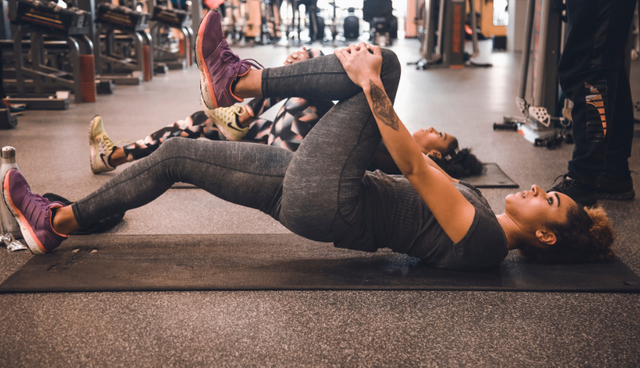
Today, I want to give you some basic training and tips that will help you in your body transformation. I always apply this on myself to my own group of students.
Training for strength
Focusing on increasing strength requires relying on multi-joint exercises such as bench press, squats and deadlifts. In these exercises, more than a single set of joints are working at the same time, such as when the shoulders and elbows work together in a bench press. This multi-joint action recruits more total muscle mass, allowing you to lift heavier weights.
The muscle fibers that are recruited during heavy series are called fast-twitch muscle fibers; These fibers are also the most likely to become stronger and larger in response to resistance training. However, they get fatigued quickly, and that is why you will not be able to lift very heavy weights for a long time.
Rest periods between these maximum demand work series are longer (3 to 5 minutes) although not fully recovering does not imply that the next series is not effective.
Of course, lifting heavy weights leads to adequate pre-heating, so it is necessary to make some lighter series of progressively heavier weights before reaching the maximum weights. Strength coaches avoid taking this type of series to muscle failure, a technique widely used by bodybuilders.

Train for muscle size
Although those who train to become mainly stronger also get bigger, their methods are not the most effective in maximizing the size of the muscles (hypertrophy).
Bodybuilders and fitness rats looking to increase the size of their muscles follow a slightly different approach to determine how much weight they use. In this case, choosing a weight in which no more than 8-12 repetitions can be made before reaching muscle failure is the best general method for maximizing muscle mass gain.
But there are a couple of things to keep in mind in this procedure:
You must use a proper execution technique
Surely you've seen videos with guys bouncing the barbell on their chest while doing bench press because the weight is so heavy that they need to generate inertia to be able to lift it. That is not a proper execution technique.
Each exercise has its own "correct execution guide". You have to have control over the weight, and only the joints designated for movement should be in motion.
If the action of the hip or knee is needed to make a curl with a bar, it is that you are using joints that should not be involved. This violates the principle of a correct execution of the movement.
Make a "real" series of 8-12 repetitions
Of course, you can put a light weight on the bar and stop at 12 reps, but that's not a real series. A true series means that you are very close to total muscle failure-the point at which you can not do another repeat with good technique (also called technical failure).
If you can do the thirteenth repetition, the weight you used was too light. Similarly, if you can only do 4-5 repetitions, the weight is too heavy to enhance hypertrophy. The right point is to choose a weight in which you can do by yourself, with correct execution, between 8 and 12 repetitions exactly.
Bodybuilders also train fast-twitch muscle fibers, usually starting with multi-joint movements ordered by the body. Here, a greater volume of work is required (3-4 work series of multiple exercises from different angles) and shorter rest periods (60 seconds for small muscles and up to 90 for larger ones).

Training for muscular endurance
Not all train to become as big or strong as possible. You can also train at a lower intensity level, that is, use lower weights.
This activates the muscle mechanisms that make it aerobically efficient, without increasing the size of the muscles.
Therefore, the muscle can do a lot of repetitions over a longer period without fatigue. For example, the musculature of the marathon runner is designed to allow you to run that distance.
Focusing on the resistance of the muscles means choosing light weights that allow us to perform between 15-20 repetitions correctly. The weight stimulus will not be enough to maximize strength or hypertrophy. This is because the muscles are using the slow-twitch fibers instead of the fast-twitch fibers.
These fibers are designed to be used in longer activities and generally do not grow significantly compared to fast-twitch fibers.

The Weight/Repetitions ratio
If you know what your goal is, it is not difficult to imagine how much weight you should use in a specific exercise.
What there is is an inverse relationship between the number of repetitions you can do and the amount of weight you drive.
When the weight increases, you can perform fewer repetitions. With less weight, you can do more repetitions.

Image: Source
You can follow me on:
Instagram: @eudinevies


Source
Plagiarism is the copying & pasting of others work without giving credit to the original author or artist. Plagiarized posts are considered spam.
Spam is discouraged by the community, and may result in action from the cheetah bot.
More information and tips on sharing content.
If you believe this comment is in error, please contact us in #disputes on Discord
Downvoting a post can decrease pending rewards and make it less visible. Common reasons:
Submit